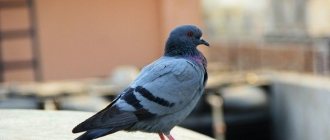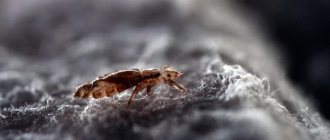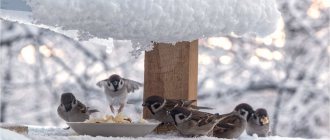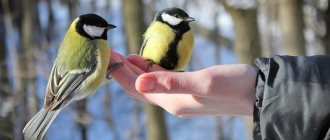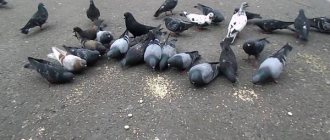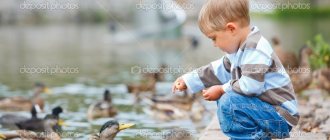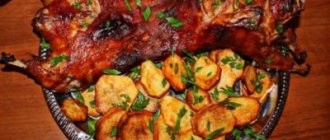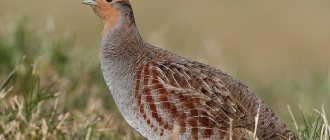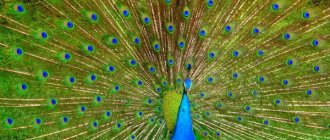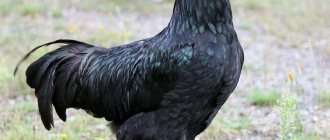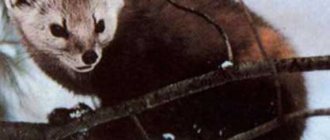566
no comments yet
0
Author:
Kiva Anatoly.
Reading time: 1 minute
- Hello! I became curious: what kind of ordinary pigeons are they - wintering or migratory? It seems that you can find them in cities all year round. From a scientific point of view, where can they be classified?
– It’s not so easy to give a definite answer to your question. In general, it should be considered that almost all currently known species of pigeons are mainly sedentary, that is, wintering birds, making long-distance flights only in exceptional cases .
And in order to understand it completely, first of all, let’s define the terminology.
How to arrange a dovecote
Pigeons can safely withstand ambient temperatures down to –7 °C. They are able to tolerate lower temperatures, but this can be dangerous for decorative breeds and chicks. And yet, the cold resistance of these birds does not at all mean that they feel comfortable in the cold. Therefore, in order to create optimal conditions for the existence of birds and their development in the dovecote, pigeon breeders insulate it in every possible way.
Most often, this is done using polystyrene foam or special cotton wool, which are protected from pecking by sheets of plywood or chipboard. All cracks are also carefully sealed, since even a weak draft is worse for the bird than extreme cold. If the temperature outside is very low, then, depending on its level, either a heating device is installed in the dovecote or the calorie content of the pigeon food is increased.
If in summer there is enough sunlight in the dovecote coming through the window, then in winter the daylight hours have to be artificially extended to half a day with the help of electric lamps. Experienced pigeon breeders recommend increasing daylight hours to 15 hours in extreme cold, while additionally feeding the birds with high-calorie food.
Fresh air in their home and the absence of high humidity are of great importance for the health of birds.
For this purpose, the dovecote is equipped with ventilation in the form of an exhaust pipe located under the ceiling and a supply pipe installed at a height of 0.15 m above the floor. However, in winter, the use of ventilation is fraught with the loss of precious heat in the room and the occurrence of a draft. Therefore, the supply of air from the outside is reduced as much as possible or completely stopped by means of valves on the ventilation pipes.
Did you know? In the Middle Ages, the price of a good carrier pigeon reached the cost of a thoroughbred horse.
Appearance, description
The crowned pigeon, which lives in Papua New Guinea, is considered the largest representative of this family. Adults weigh between 1.7-3 kilograms. The smallest representatives include the diamond striped dove, which lives in Australia. It weighs no more than 30 grams.
Interesting moment! Pigeons are small birds, growing in length from 15 to 75 cm and can weigh from 30 grams to 3 kilograms.
Pigeons are characterized by a very muscular physique. Their neck is short and their head is small. The wings are relatively long and wide, consisting of 11 primary flight feathers, as well as 10-15 secondary ones, with rounding at the tips. The tail is also relatively long, and can be either pointed or rounded, as well as wide. As a rule, the tail consists of 12-14 feathers, and in crowned and pheasant pigeons - up to 18.
The beak of these birds is generally short, but is found to be of medium length, straight and thin, often with a characteristic widening at the very base. The base of the beak is characterized by the presence of areas of skin not covered with feathers, which are scientifically called cere. The same areas can be observed within the eyes.
Sexual dimorphism in these birds is not clearly expressed, although males are always larger than females. In some species living in the tropics, the feathers of males are more brightly colored than those of females.
The birds have thick plumage, close to the body, of various tones, but not as bright as some tropical species. The legs of pigeons are relatively short, four-toed, with three toes located in front and one behind. This structure allows pigeons to walk on the ground without problems.
It is quite easy to determine whether a bird belongs to the Pigeon family using morphological characteristics, although some species have an external resemblance to birds such as pheasants, partridges, parrots and turkeys.
Important point! Pheasant pigeons are similar in appearance to pheasants, although many people do not know that they are not pheasants, but pigeons.
Pigeons, like some other bird species, lack a gallbladder. Even in ancient times, a similar fact misled naturalists who believed that pigeons do not produce bile. This conclusion was confirmed by one of the theories of the 4 body fluids. In this regard, the absence of bile secretion in pigeons was considered a sign of the “divinity” of the bird. In fact, pigeons secrete bile, but it goes straight into the digestive system.
Pigeons | Jumanji. Animals in the metropolisWatch this video on YouTube
Nutrition
In winter, birds have to spend the energy they receive from food not only to ensure the vital functions and motor activity of their body, but also to heat it additionally.
What to feed pigeons in winter
The winter menu of this bird should contain foods with high calorie content. In addition, pigeon food should replenish the winter vitamin deficiency.
Therefore, a complete pigeon diet in the cold season consists primarily of:
- oats;
- corn;
- barley;
- lentils;
- boiled potatoes;
- carrots;
- cabbage;
- apples;
- bananas;
- rapeseed;
- flax;
- sunflower;
- wheat bran;
- crushed lime;
- bone meal;
- vitamin and mineral premixes.
We recommend that you find out what you can and cannot feed pigeons.
What not to feed
When talking about the best way to feed pigeons in winter, we should not forget that not all foods are healthy for birds, and some of them are even dangerous to their health. It is not recommended to feed pigeons:
- millet;
- peas;
- wheat;
- buckwheat;
- Vikoy.
And it is strictly forbidden to treat them:
- bread of any kind;
- cheese;
- milk and sour cream;
- fish;
- meat and products made from it;
- citrus fruits;
- sweets;
- salty foods;
- fats in the form of lard and any oil.
How to give water
Watering pigeons, which like to drink a lot, is a considerable problem in winter.
Important! It is strictly forbidden to feed pigeons with melt water in winter, much less give them snow.
From the outside, these birds are well protected from the cold by dense plumage, but the entry of ice water or snow into the bird’s body from outside leads to hypothermia, which can be fatal. Therefore, in severe cold weather, owners have to either replace cold water in the drinking bowl with warm water every couple of hours, or install heated drinking bowls, or constantly fill the drinking bowls with small portions of water, which will last the pigeons for a maximum of an hour. The basic rule is that the temperature of drinking water should not fall below +8 °C.
Reducing sexual activity
Proper maintenance of pigeons in winter is a task no less important than food balance. First of all, remember - the room where the birds live must be heated. At the same time, there is no need to strive for the temperature in the dovecote to be the same as in a residential building. Moreover, according to the rules, the maximum for a poultry house is 20 degrees above zero.
But you should not heat the room too much; for comfortable keeping of pigeons in winter, 10-15 degrees is enough, the lower bar should be kept at 7 above zero. Here, a lot still depends on whether the birds will breed during this period.
Professional breeders breed all year round. We do not recommend this for amateurs. Besides the fact that in cold weather preparing for laying is quite a problematic task, as soon as the temperature drops below 12 degrees, all the eggs will freeze. Plus, any draft, even from an open door, can also “freeze” them.
The winter moratorium on reproduction is another reason why you need to change your diet. After all, protein food promotes sexual desire and by removing it, you will reduce the libido of birds.
In winter, hemp grain is completely excluded from the diet, as it is a pathogen for pigeons.
Is it possible to keep it outside?
As already mentioned, domestic pigeons, with the exception of some decorative breeds and chicks, can withstand low temperatures quite painlessly. Therefore, they can be kept outside in winter if:
- there is protection from snow and cold winds;
- there are no severe frosts;
- there is a high-calorie diet;
- there is constant access to water at an acceptable temperature;
- pigeons are protected from birds of prey and animals.
Find out how long domestic and outdoor pigeons live on average.
Natural habitats
Pigeons live on almost all continents, with the exception of the North and South Poles. These birds inhabit various terrestrial biotopes, from dense forests to deserts, as well as mountainous areas at altitudes of up to 5 thousand meters, including in areas where humans operate. About 60 percent of pigeon species inhabit islands and are not found on mainlands.
There are 9 species of similar birds found on the territory of Russia, and the largest number of currently existing species live in South America and Australia.
Behavior of city pigeons in winter
The impression that street pigeons exist quite happily in winter in conditions of low temperatures, permanent lack of food and difficult access to water is refuted by statistics that indicate that the life of street birds is more than three times shorter than that of domestic birds. Yet large pigeon populations are constantly present in every city. Let's look at how they winter and what these birds do in winter to survive cold times.
Did you know? Pigeons have been neighbors with humans for several millennia. There is documentary evidence that more than five thousand years ago these birds already entered into human use in Mesopotamia.
Where do you sleep in the city?
This bird, active during the day and visible almost everywhere on the streets, squares and parks of cities, disappears from human sight at night. And most people don't know where these birds sleep. Usually city pigeons find a place to stay for the night:
- in the attics of houses;
- on technical floors of buildings;
- under roof overhangs;
- on architectural details of old houses.
Where do they eat?
These birds are capable of flying up to fifty kilometers daily in search of food. In city conditions, pigeons are able to find a lot of food waste left by humans, however, if possible, when in winter the ground has not yet been covered with a thick blanket of snow, these birds prefer to feed on high-calorie seeds of cereal grasses and other weeds in vacant lots, squares and parks.
When snow falls, this becomes difficult to do, so they have to turn to whatever is edible on the city streets. There are also always people who feed birds - various cereals are best suited for this.
What do they drink?
Drinking, as already mentioned, is the biggest problem for pigeons in winter. Ice water, not to mention snow, causes hypothermia in the bird’s body, which is especially dangerous if there is a lack of adequate nutrition. This is one of the main reasons, along with feeding pigeons with bread, that the life of a street individual is so short.
It is interesting to know why pigeons nod when they walk.
But finding even ice water in the cold winter is quite difficult for birds, since most open water bodies freeze. Their sources of drinking are water taps, non-freezing reservoirs near industrial enterprises, melting snow near warm sewer manholes, drops on the tips of icicles on sunny days.
Do they fly away?
The answer to the question why pigeons do not fly to warmer regions for the winter lies in the explanation of why many birds generally fly south in the fall. They do this not at all out of fear of frost, as one might think. For example, wild geese, ducks and swans, due to a thick layer of subcutaneous fat, are able to easily withstand fairly low temperatures. However, freezing of reservoirs stops birds' access to food supply. It is because of lack of food that they are forced to leave their native lands.
Pigeons, who know how to find food for themselves in winter conditions, are spared the need to undertake long, difficult, troublesome and dangerous journeys to foreign lands.
Do pigeons get cold?
Birds are protected from frost by dense plumage and warm down. With a high-calorie diet, they can cope quite easily with lower temperatures (than –7 °C).
Important! To make it easier for pigeons to tolerate the night cold, which is facilitated by the bird's full crop, it is necessary to carry out
the second feeding in the evening.
Pigeons - both domestic and urban - exist near humans and solely thanks to them. And therefore, their well-being depends on how correctly he behaves in relation to his feathered companions of urban life.
Preparing for the breeding season
Individuals of different sexes should be kept separately in winter so that they do not waste their energy on early egg-laying. Meanwhile, this is an excellent time to select pairs on paper or in a special pigeon breeder’s diary from which you can get chicks that are closest to the breed standard. The following recommendations should be taken into account:
- There is no need to leave only high-quality birds for the breed, since high-quality offspring can also be obtained from not very successful pigeons. In addition, sometimes almost perfect chicks can be quite unsightly.
- It is impossible to breed pigeons with the same defects that are unacceptable according to the standard, since in the future the offspring of the pair will have a marriage.
- Unless absolutely necessary, you should not select a couple consisting of close relatives.
- There is no need to focus on the bird’s exterior: care in incubating and feeding chicks, orientation to the area - all these characteristics are inherited.
- If there is no suitable pair, you can look for the desired bird from fellow pigeon breeders, but new birds should not be immediately allowed into the pigeon coop, as this is unsafe. Initially, they should be quarantined, keeping them separate from the rest of the pigeons for some time. You should monitor their condition and, if possible, submit their droppings for analysis to a laboratory. Young animals of low value can be added to them. If the bird is sick, it will definitely show.
- It is better not to buy pigeons kept in aviaries, since they are bred behind bars all year round and lose the ability to fly in a circle and the ability to navigate the terrain. If in the cage they cannot be distinguished from flying birds, then outside it everything becomes clear.
City pigeons live 3 times less than domestic pigeons, and also more often suffer from various diseases. However, even if the bird is kept in comfortable conditions, in winter it is necessary to pay special attention to caring for it so that it can safely survive the cold season and prepare for the breeding season.
0
0
Copy link
Chizh
Siskin
Representative of passerines. Chooses coniferous forests for life. It feeds on insects and seeds. At the end of autumn, it chooses a nesting site close to ice-free water bodies. The bird is excellent for keeping at home. It quickly settles into cages and accepts food from a person’s hand. In this case, the diet is formed from rapeseed and flax seeds; food for canaries is suitable. Feature: capable of learning a variety of tricks. The color is bright yellow, with a gray tint.
Chemical repellents
When deciding how to keep pigeons away from your home, you can opt for chemical repellents. It is advisable to use relatively safe means:
- sticky substances - they glue paws, glue feathers, which makes birds refuse to visit “dangerous” places;
- non-toxic repellents based on strong-smelling substances (essential oils, menthol, capsaicin) with an unpleasant taste - they do not lead to poisoning (preparations with such properties can be found in the assortment of Pestman or other manufacturers).
Such means have their drawbacks. Sticky substances accumulate dirt over time, lose effectiveness, and spoil the appearance of eaves, window sills, and ebbs. If a small bird lands on the trap, it may subsequently die due to feathers sticking together and the inability to fly normally. It is difficult to clean surfaces from frozen substances. Strong-smelling substances should not be used in closed spaces if there are people present. In open areas they lose effectiveness over time.
Kedrovka
Nutcracker
Belongs to the corvid family. The second name is Orekhovka. The dimensions are similar to a jackdaw. The beak is long and powerful. With its help, the bird can easily extract nuts from the cones. Makes reserves in a special sublingual pouch. Accumulates up to 90-100 nuts at once, which are then moved to the nest. Also, supplies are made in the ground or in snowdrifts. This property helps to renew coniferous trees - part of the food supply germinates with the arrival of spring.
Reproduction, lifespan
The reproduction of these birds depends on egg laying. If pigeons are kept at home, then the laying of eggs can be predicted by the behavior of the female. A couple of days before this, she becomes inactive and often sits in the nest. The process of laying eggs occurs a couple of weeks after fertilization.
A pair of pigeons builds a nest for themselves, and the male finds and brings the necessary building material, and the female forms a nest from it. In their natural habitat, these birds live for about 5 years, since they have many different enemies. If you keep pigeons at home, providing them with suitable conditions, then pigeons can live 3 or even 5 times longer.
Do skyscrapers bother birds?
There are birds for which the “concrete jungle” is an ideal place for nesting or wintering. These are primarily the inhabitants of the rocks - the peregrine falcon, black swift and rock pigeon. But there are species for which modern cities are dangerous. The ones that crash into glass. Most often you can find dead song thrushes and titmice. Finally, nesting attempts in cities are unsuccessful for many birds: eggs and chicks are eaten by cats, hooded crows, squirrels and other predators, and there are frequent cases of nests and broods dying at the hands of humans.
Another problem is constant anxiety on the part of people. If birds are constantly flushed, they are forced to expend energy, which is especially difficult to obtain in winter. On the other hand, this is compensated by the abundance and availability of feed in cities. At the same time, sealing seams in panel houses, as well as installing bars on dormer windows, deprives them of comfortable conditions for spending the night in cozy crevices and attics.
Interesting abilities
The expression “messenger pigeon” does not surprise anyone. For thousands of years, these birds successfully coped with a similar task, which Genghis Khan, Caesar and many other rulers used in their time. The phenomenon is simple: the birds were sent with a message to the places where their home was. For this purpose, they used individuals that had already formed a pair.
The reason is that on the way the pigeon could meet a potential partner, and then its return home was in question.
Experts explain the interesting ability of pigeons to find their way as follows:
- Birds perfectly perceive low-frequency signals that come from various objects on the surface of the earth: forests, hills, seas. This is what helps them navigate the terrain well.
- The magnetic receptor system on the beak allows pigeons to monitor changes in the earth's magnetic field and determine their course.
Interesting! Pigeons have well-developed visual memory and sense of smell. These qualities “work” together and give these birds unique abilities.
Crossbill
Crossbill
Crossbill
Crossbill
A small bird of gray-brown color. The breast is crimson in the male and greenish in the female. Its dimensions can reach up to 20 cm. Its peculiarity is the presence of a large beak. The structure is cross, facilitating the extraction of seeds from the cones of coniferous trees and climbing their trunks. Habitat:
- Europe;
- Asia;
- Africa (northwest);
- Philippines;
- Central and North America.
The bird can often be seen in spruce forests. Most rarely, she chooses mixed plantings for wintering. Completely ignores cedar.
Interesting: Raven
